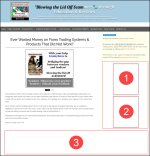- Home
- Currency Options Trading
- Binary Options Trading Strategy The Inside Bar
Binary Options Trading Strategy The Inside Bar
by Girvan Lambert
(Canada)
While some people are only involved in binary options trading for the profits, there are traders out there who genuinely enjoy the process, and who do not mind knowing a thing or two about what’s going on under the hood, even if they happen to be using an autotrading solution.
The inside bar strategy is one of the simplest and most straightforward ways to spot and to exploit periods of market reversal, and it is a fun way to immerse yourself in the trading of the Put/Call and Touch/No Touch contracts.
The inside bar is based on the two-candlestick inside bar pattern, but it makes use of two other important indicators as well.
Before we go anywhere with this strategy though, let’s take a look at what an inside bar pattern is.
The inside bar formation is made up of two candles: a Day 1 Candle and a Day 2 candle. The Day 1 candle – whether bullish or bearish – is the longer of the two. The Day 2 candle is so short that it fits right inside the Day 1 candle, meaning that its low is higher and its high is lower than that of the preceding candle.
The inside bar pattern can be used with charts of any time frame. The time frame used for analysis will obviously have an impact on the expiry of the trade.
In addition to the spotting of the inside bar pattern, traders will have to use the Automatic Pivot Point calculator (which is available for free) as well as the stochastic oscillator, which will be used to identify oversold and overbought situations in the asset-price.
All three of the above listed indicators need to produce a strong signal indicating an imminent market reversal in order for the conditions to be considered ripe for the actual placing of the Put/Call and Touch/No Touch trades.
Here’s how the actual trading works.
Let’s consider a bullish market reversal, which obviously calls for a Call trade. How does one know when/where to place the trade and what expiry to set for it?
The first step is to apply the Automatic Pivot Point calculator and then to look for the three support levels (S1, S2 and S3). If the asset price is at one of these levels, the next step is to check the stochastic oscillator. If its lines cross between 0-25, indicating an oversold situation, the second requirement for the trade has been fulfilled as well.
All we need now is the inside bar pattern, which obviously needs to occur simultaneously with the above said two conditions. If everything is in place indeed, the Call trade should be placed on the opening of the very next candle on the chart.
If the Day 1 candle is bearish and the Day 2 one is bullish, the trading signal gains additional validation.
The No Touch zone in this case will be obviously below the lows of the inside bar pattern, while the Touch zone will be above it. With that in mind, it is sort of obvious that the Touch trade should be placed 40 pips above the line defined by the lows of the inside bar formation and the No Touch trade should go 30 pips below it.
The expiry time for this trade should be set to 6 hours, provided the analysis is done on an hourly chart.
Now that you understand the mechanics of this strategy, you’ll be able to transpose the above said to a situation dealing with a bearish reversal.
That’s about all there is to it. Don’t forget to test-run the strategy on a demo account before tossing it into the deep water of real money trading.
Author bio : Girvan Lambert is a binary options trader from Canada.





